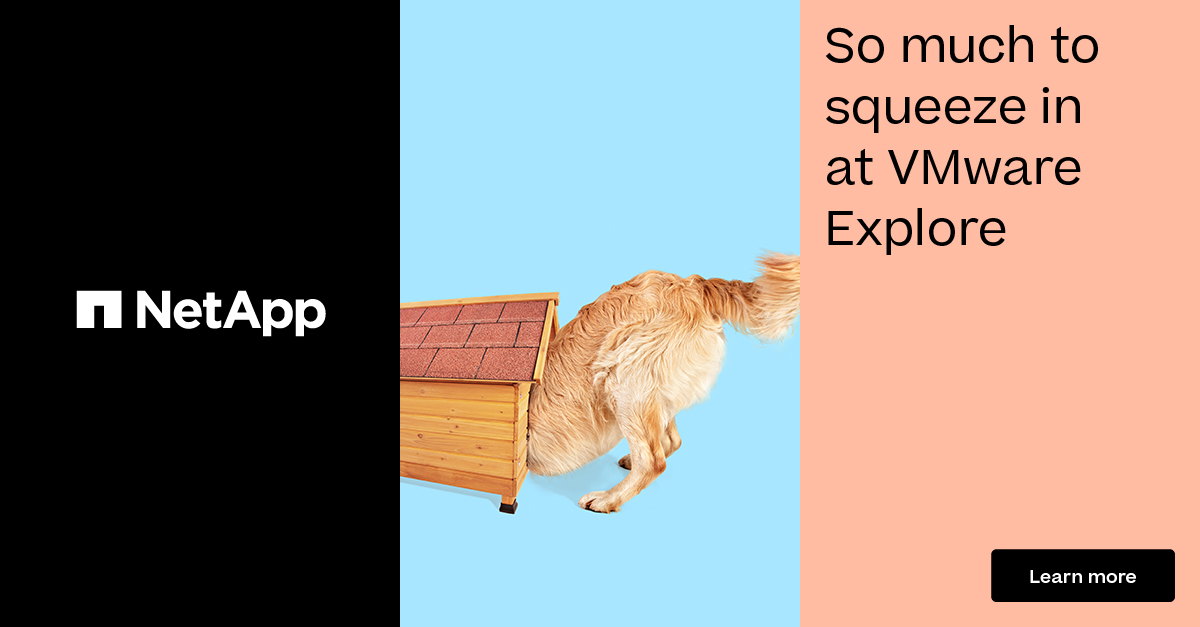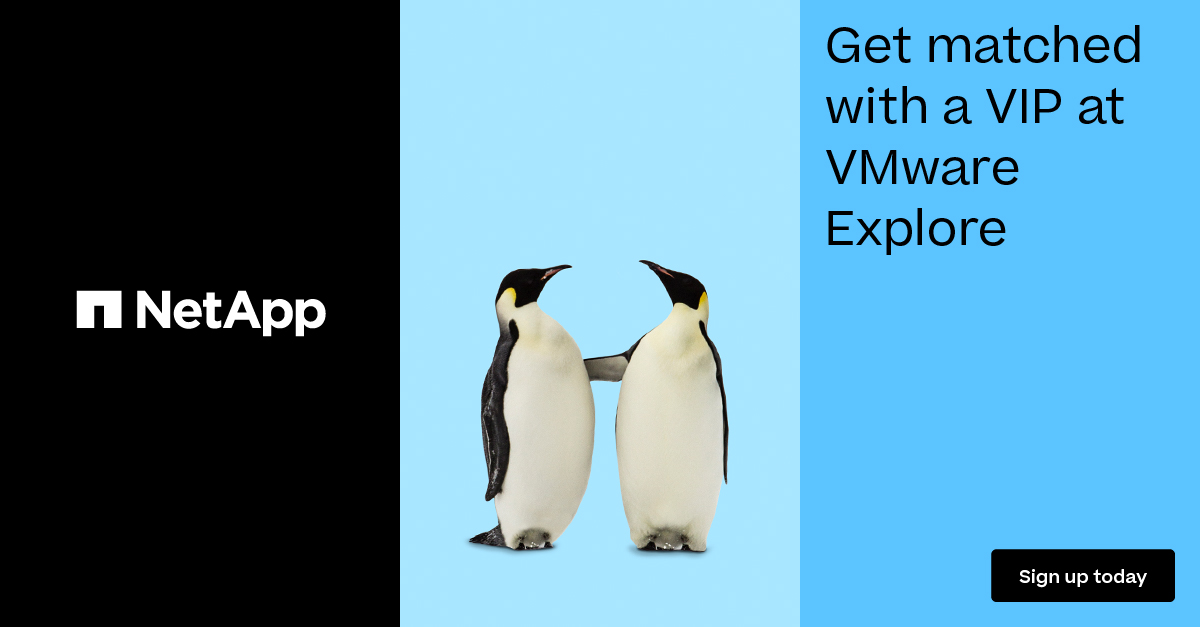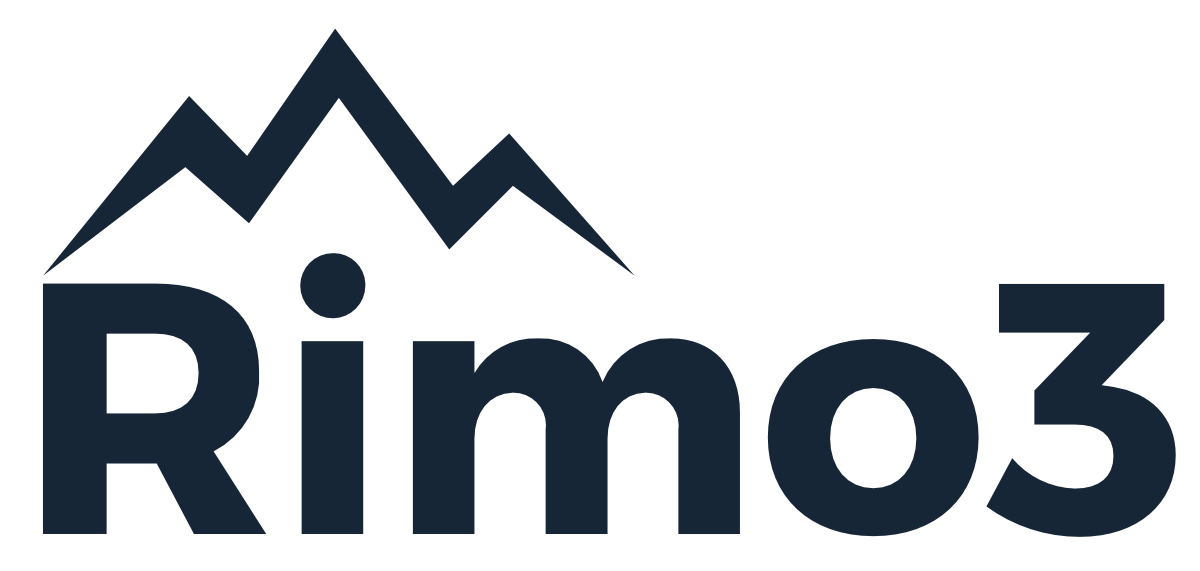VMblog: Can you give VMblog readers a quick overview of your company?
Cody Hosterman: At a high level, Pure delivers a cloud experience that empowers every organization to get the most from their data while reducing the complexity and expense of managing the infrastructure behind it. Pure's commitment to providing true storage as-a-service gives customers the agility to meet changing data needs at speed and scale, whether they are deploying traditional workloads, modern applications, containers, or more. And with a certified customer satisfaction score in the top one percent of B2B companies, Pure's ever-expanding list of customers are among the happiest in the world.
VMblog: Your company is sponsoring this year's VMware Explore event. Can you talk about what that sponsorship looks like? Where can attendees find you?
Hosterman: Pure Storage is a Platinum sponsor at this year's VMware Explore. Any registered attendees can visit our onsite booth (Booth #1201) to learn the latest and greatest in all things Pure for VMware and chat with our experts. Check out our presence and request a meeting here. We will also be hosting a Bourbon tasting on Tuesday, August 30 from 5-7pm PT - we encourage you to stop by!
VMblog: VMware has decided to change the name of the event this year from VMworld to VMware Explore. With VMworld being such a part of the history, do you have any thoughts on the name change?
Hosterman: If you look back, the buzzwords of past VMware events were largely centered on the virtual machine (VM)-VM backup, VM recovery, VM granularity, VM insights. But these are less applicable than they once were because what we were really talking about was the application. And the application had a 1:1 relationship with a virtual machine.
A given VM always equaled the same application. The VM didn't outlast the application, and the application did not outlast the VM. They lived and died together. In other words, a VM-related workflow was also an application-level workflow-the transitive property of application virtualization.
Yet with the continued march towards containerization, this equation is changing. One VM does not equal one application. Alternatively, one VM may equal many applications. These applications might shift to other VMs. The VMs might outlive the applications or these applications might outlive the VM. This paradigm has shifted. AGAIN. It did once before with bare metal to hypervisors--and those didn't go away either. Look at what VMware is doing with Project Monterey. A single platform to manage bare metal, VMs, and containers.
VMware Explore is a welcome change to what was previously known as VMworld. While we expect all the great engaging content and sessions that is typical of "VMworld", VMware's commitment to evolving its brand speaks volumes to how it is shifting to meet the needs of today's enterprises.
VMblog: Do you have any speaking sessions during the event? If so, can you give us the details?
Hosterman: We have several speaking sessions at this year's VMware Explore event. As a part of our sponsorship, we're excited to invite attendees to join the following sessions:
- Core Storage Best Practice Deep Dive: There have been new core storage features released with VMware vSphere and correctly configuring them is critical to optimum performance and resilience. We'll review new and common features, as well as best practices. We'll focus on NVMe over Fabrics (NVMeoF), VMFS, and vSphere Virtual Volumes.
- Speakers: Cody Hosterman, Director, Pure Storage; Jason Massae, Staff Technical Marketing Architect, VMware
- Active-active stretched cluster vVol support with VMware and Pure Storage: Stretched clusters offer the ability to balance VMs, application workloads between two geographically separated datacenters, with non-disruptive workload mobility enabling migration of services between geographically close sites without the need for sustaining an outage. Also, stretched cluster SDDCs offer an availability strategy to customers. The solution would provide the SDDC with an extra layer of resiliency in the event of host-level failures within the cluster or with AZ-level failures within the region. In this session, we will talk about the stretched cluster support enabled through the joint solution between Pure Storage and VMware using vSphere Virtual Volumes alongside a preview demo
- Speakers: Alex Carver, Sr Solutions Engineer, Pure Storage; Jason Massae, Staff Technical Marketing Architect, VMware
- More Applications in Production with Tanzu and Pure Storage: More than 55% of organizations are running Kubernetes in production today. VMware Tanzu provides a solution to run secure, consistent production grade Kubernetes on vSphere or any public cloud. The Portworx by Pure Storage Kubernetes data platform was created to solve the needs of customers that require multi-cloud mobility, high availability, disaster recovery and backup for their most critical production applications. Combined with fully automated application Granular storage for vSphere with Pure Storage FlashArray. This session will deep dive into how you can get over the common hurdles preventing you from running more applications in Production in Kubernetes and gaining the Cloud Native efficiency, end-to-end insights, and agility to provide value to your business.
- Speakers: David Stamen, Principal Field Solution Architect, Pure Storage; Jon Owings, Director, Cloud Native Strategy, Pure Storage
- Build and Publish a PowerShell Module to the PowerShell Gallery: Have you ever created a PowerShell module and needed to share it and didn't know how? The PowerShell gallery is a great place to do this. Join this session and learn how to build and publish a PowerShell module to the PowerShell gallery, and allow your contribution to be shared with the VMware community.
- Speakers: David Stamen, Principal Field Solutions Architect, Pure Storage
- Speakers: David Stamen, Principal Field Solutions Architect, Pure Storage
VMblog: What are you personally most interested in seeing or learning at VMware Explore?
Hosterman: From a technology standpoint, I'm most interested in learning about what's new in the next version of vSphere and Project Monterey, and how VMware will influence public and private environments going forward. That and of course learning from customers more about their container strategy--what do containers mean for their VMware infrastructure. From an industry lens, I'm most interested in seeing the community in person again. We have tremendous relationships across this industry that we've had to partially put on hold these past 2+ years. We've got a lot of catching up to do!
VMblog: What kind of message will an attendee hear from you this year?
Hosterman: This year, our focus areas at VMware Explore include application-granular services, application-granular storage features, and Kubernetes-integrated data management.
- Application granularity: We're focusing on application granularity in many ways via our Portworx offering, which is tightly focused on the Kubernetes layer. Portworx, when running within Kubernetes, on top of VMware, leverages the VMware Cloud Native Storage (CNS) driver to provision storage. Portworx, or a consumer directly using CNS, takes advantage of storage policy-based management (SPBM), a focal point of vSphere Virtual Volumes. This provides application-granular storage via a policy-driven provisioning mechanism. Together, Portworx + vVols focuses on what matters; not the VM, but the application and the persistent volume used by an application. One persistent volume provisioned by vSphere Cloud Native Storage is one volume on FlashArray. This provides end-to-end performance, capacity, and feature management/insights.
- Ransomware protection: VMs and containers are both susceptible to ransomware attacks. A key to protecting against them is having a way to assign air-gapped protection, ensure it is configured, and quickly restore. (If a restore takes too long, it may even be cheaper to pay the ransom). Pure SafeModeTM provides mechanisms to protect data, so no one-not even internal user administrators-can disable, delete, or alter it. Pure1 provides fleet-level reporting, and FlashArray provides immutable SafeMode protection with instant volume recovery, regardless of the dataset size. Our vSphere plugin provides the recovery process directly within the vSphere Client.
- Next-generation data center technology: Containers are not the only burgeoning technology for customer environments. To support next-generation applications, you need next-generation performance and features-the likes of which traditional SCSI doesn't offer. Pure's early and on-going support of NVMe over Fabrics (NVMe-oF) and tight engineering collaboration with VMware via design partnerships keeps you at the bleeding edge.
- A cloud operating model: Another key point is that next-generation IT infrastructures aren't just about the technology, they're also about the model that they follow. The cloud operating model includes as-a-service, intelligent management, Opex chargeback, and more. Pure has invested in this via Pure Fusion, our scale-out storage model that unifies arrays and optimizes storage pools on the fly. And our evolved business models provide plenty of choice with Evergreen//Forever, Evergreen//Flex, and Evergreen//One. We've taken our best-in-class VMware integration and expanded that to cover the move to containers, all while continuing to simplify managing, running, and protecting both VM-based and container-based applications. As always, Pure is doing all of the above with our core principles in mind: simple, cost-effective, and evergreen.
VMblog: Where can organizations learn more about your products and services?
Hosterman: Pure has a strong portfolio of offerings that cater to customers' unique storage needs in today's dynamic business environment. To learn more about our systems, software and stack solutions, you can visit: https://www.purestorage.com/products.html
VMblog: What specifically does your company offer a VMware shop or a VMware implementation? What problems do you solve for them?
Hosterman: Pure offers a portfolio of data services for your VMware environment giving our customers a Fast, Simple, and Secure storage platform that can evolve with the customer. We partner with VMware to design next generation technologies like vVols and NVMe-oF, as well as offering jointly architecture solutions such as Portworx for Tanzu. We extend this with features to help protect and mitigate against ransomware attacks. In short, we really provide industry leading data solutions for any part of your VMware environment.
VMblog: How does your company work with VMware? Where do you fit within the VMware ecosystem?
Hosterman: While Pure works with many partners, VMware has always been and will continue to be a critical and strategic technology partner.
For more than a decade, Pure has been a VMware Technology Alliance Partner, collaborating with VMware to help customers realize the greatest value from their virtual infrastructure and underlying hardware. As one of the few Advanced Technology Partners with executive sponsorship at VMware, Pure continues to jointly innovate with VMware through native feature integrations, our design partnership initiatives, and VMware Validated Design certifications.
Just in the last few years Pure has been a design partner for vVols, Site Recovery Manager for vVols, and NVMe-oF support. We deliver jointly architected solutions through the Pure Validate Design process, The VMware Validated Designs certification, and other industry partners such as Cisco Validated designs.
We have a number other joint initiatives in process so stay tuned for those announcements to come soon.
VMblog: VMware will be covering big topics in their keynote, but what big changes or trends do you see taking shape in the industry for 2022 and heading into 2023?
Hosterman: A few trends that I'm seeing play out across the industry, which we'll see much more of in the next year include:
- Real engagement to the hybrid cloud: This includes a shift to building a true cloud operating model on-premises. We have been on the precipice of hybrid cloud for awhile--this is real. Now.
- Managing dual application architectures. What should be a VM, what should be a container. How do I manage both? Traditional choice of when something should be virtualized compared to bare metal was easier. Containerization is a different question altogether. There is a cost to that choice, so it may not be right for the majority of applications where VMs are still a better fit. So dealing with that and managing it will be taken head on.
- Ransomware. No tech conversation is complete without this in mind--no vendor worth anyone's time won't be driving solutions here with customers.

















